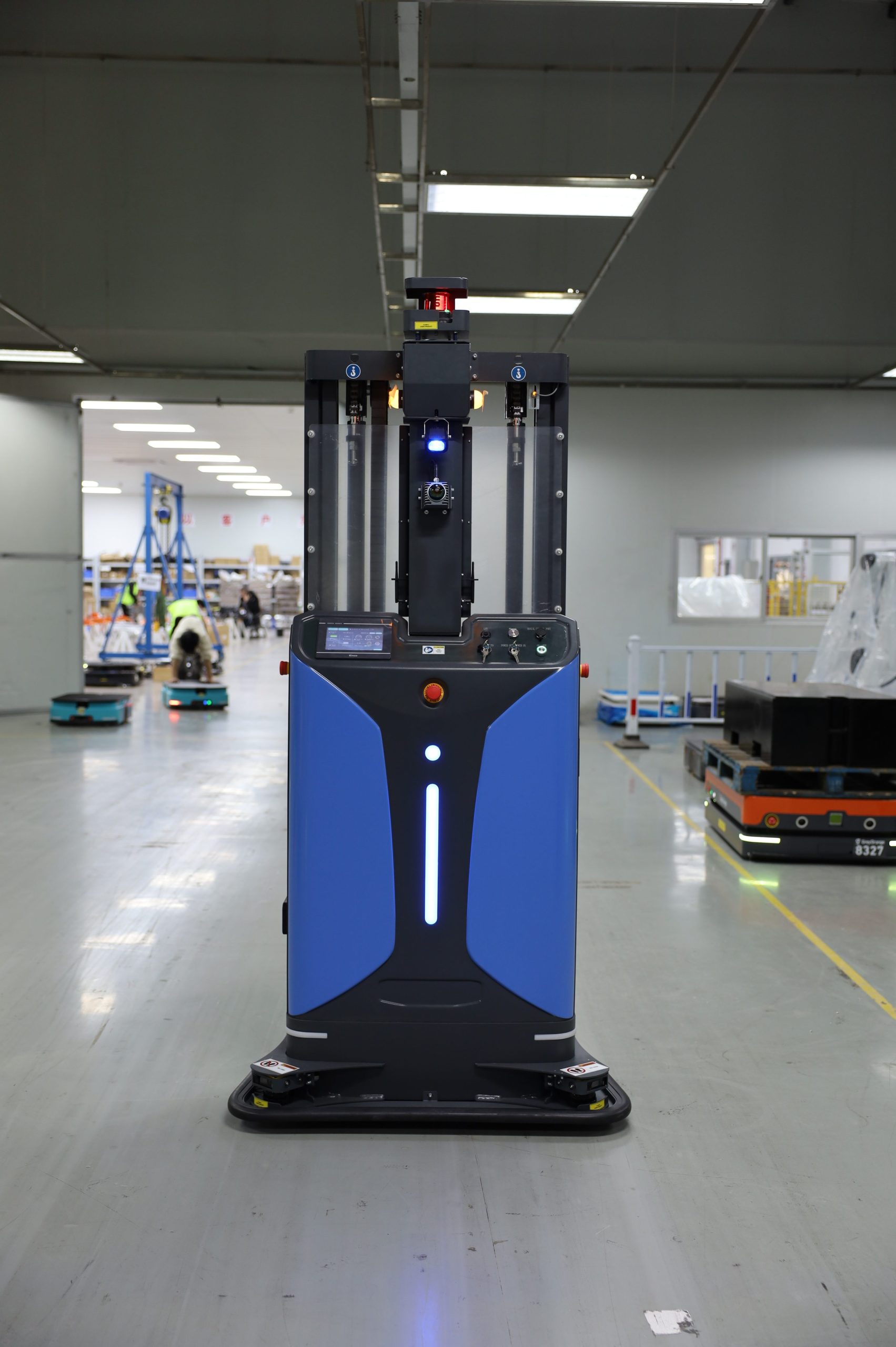Automating Internal Logistics: AMR vs AGV – Which is Right for Your Business?
Automating internal logistics is a critical challenge for companies of all sizes. Instead of allocating valuable employee resources to material transportation, businesses can leverage automation to streamline these tasks, allowing staff to focus on higher-value activities. By adopting automated solutions, organizations can enhance productivity, reduce bottlenecks, and optimize delivery schedules.
However, when it comes to choosing the right automation solution, the decision often boils down to AMRS (Autonomous Mobile Robot) or AGVS(Automated Guided Vehicle). While both are designed for material transportation, they differ significantly in operation, flexibility, and application. Let’s break down the key differences and benefits of each.
What is an AGV (Automated Guided Vehicle)?
AGV are robots that follow fixed paths or tracks to transport materials within a facility. They typically require infrastructure modifications, such as magnetic tapes, wires, or predefined routes, to operate.
Key Features of AGVs:
- Follows fixed, pre-programmed routes.
- Requires changes to the environment (e.g., installing magnetic tapes or sensors).
- Ideal for repetitive tasks in controlled environments.
- Limited flexibility in navigation.
What is an AMRS (Autonomous Mobile Robot)?
AMRs, on the other hand, are fully autonomous robots capable of navigating dynamic environments without fixed paths or tracks. They use advanced sensors, cameras, and mapping technology to move freely and adapt to changes in their surroundings.
Key Features of AMRs:
- Operates autonomously without predefined routes.
- No need for infrastructure changes – can navigate around obstacles and people.
- Highly flexible and adaptable to changing environments.
- Ideal for complex, dynamic workflows.
AMR vs AGV: Key Differences at a Glance
| Feature | AMR | AGV |
|---|---|---|
| Navigation | Autonomous, dynamic navigation | Follows fixed paths or tracks |
| Infrastructure | No modifications required | Requires infrastructure changes |
| Flexibility | High – adapts to environment changes | Low – limited to predefined routes |
| Cost | Higher initial investment | Lower initial cost |
| Use Case | Dynamic, complex environments | Repetitive tasks in controlled spaces |
Which is the Best Fit for Your Needs?
Choosing between AMRS and AGVS depends on your operational requirements and environment:
- Choose AGV if:
- Your workflow involves repetitive tasks in a controlled environment.
- You have a fixed layout and do not anticipate frequent changes.
- You are looking for a lower upfront cost solution.
- Choose AMR if:
- Your environment is dynamic and requires flexibility.
- You need a solution that can adapt to obstacles and changes.
- You are willing to invest in advanced technology for long-term efficiency.
By understanding the differences between AMR and AGV, you can make an informed decision that aligns with your business goals and operational needs. Whether you prioritize flexibility or cost-effectiveness, both solutions offer unique advantages to optimize your internal logistics.
AMR vs AGV: Choosing the Right Solution for Cost-Effective Automation
AGVs (Automated Guided Vehicles):
AGVs require a significant initial investment due to the need for infrastructure modifications, such as the installation of wires, magnetic strips, or other guiding systems. These installations can disrupt production during the setup phase. Moreover, AGVs tend to be less flexible and harder to adapt to evolving business needs, meaning that future modifications can incur additional costs.
AMRs (Autonomous Mobile Robots):
On the other hand, AMRs are generally a more cost-effective automation solution. They don’t require extensive changes to existing infrastructure, which makes them quicker and less expensive to deploy. AMRs can be up and running in a relatively short period, leading to almost immediate efficiency gains. With lower upfront costs and fast process optimization, AMRs often deliver a rapid return on investment—sometimes in less than six months. Additionally, as businesses grow, AMRs can be scaled with minimal additional investment, making them a more agile and adaptable choice for modern manufacturing environments.
In summary, while AGVs come with higher initial costs and potential inflexibility, AMRs offer a faster, more cost-effective alternative that can be easily scaled as business needs change.

